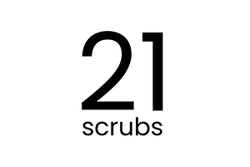Why do we wear scrubs? Scrubs have become the uniform for a range of industries spanning from medical to beauty. But these scrubs are so much more than just a uniform. They are worn not just to protect the wearer, but their patients too.
In particular, scrubs worn during surgery have strict requirements to maintain a sterile environment in theatre from the type of material, to how they are worn and when they are worn. The guidelines for surgical attire by the American Society of Anaesthesiologists state that “when choosing scrub material, consider both containment of shed skin particles and comfort”.
We all shed dead skin and hair cells continuously. An average human will shed 10,000 keratinocytes from our epidermis per minute when walking. We also shed between 50-100 hairs a day on average. The problem with these sheds is that they are potential “reservoirs for infectious particles”.
So how do we stop our shedding skin cells and hair from contaminating our theatres? The key is to contain them under our surgical attire securely so they cannot escape. The scrubs material must be impermeable to skin cells and hair. It is well known that surgical caps perform this function for hair and masks to prevent the spread of pathogens from our nose and mouth. The scrub material also plays a vital role.
So, what makes a good surgical scrub material:
- Comfort and stretch - determines how much friction and rubbing occurs with our movements. The less rubbing, the less shed.
- Breathability - is important to allow body heat to escape and prevent overheating, but must still contain the shed skin cells.
- Lint-free - to prevent shedding of the material onto surgical site and theatre.
- Tightly woven - 100% cotton is not recommended as they have large pores which will risk the release of skin cells into the environment. (AST Standards of Practice for Surgical Attire, Surgical Scrubs, Hand Hygiene and Hand Washing)
How should we wear surgical scrubs?
This must be put on in a designated changing area just prior to surgery. A head cover should be worn when putting on the scrub top to prevent shedding of microbes on to the scrub.
If wearing a two-piece scrub (top and pants), the scrub top must be tucked into the scrub pants to contain skin cells and prevent them falling out during surgery.
When to change into surgical scrubs:
Scrubs which are to be worn in surgery must only be donned just prior to entering surgery. Separate scrubs must be worn for general day to day wear (in consultation, clinic or hospital) and during surgery.
|
Surgical Scrub recommendations |
21 Scrubs |
|
Comfortable and Stretchable |
4-way stretch, light weight, waterproof |
|
Breathable |
|
|
Lint-free |
|
|
Tightly woven |
|
|
Avoid shedding during changing |
|
|
Scrub tops must be tucked into scrub pants |
|


